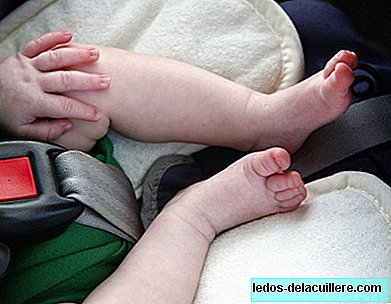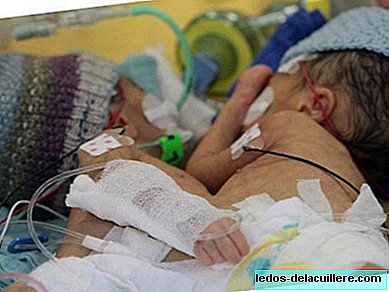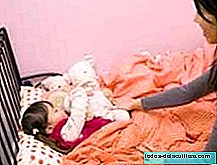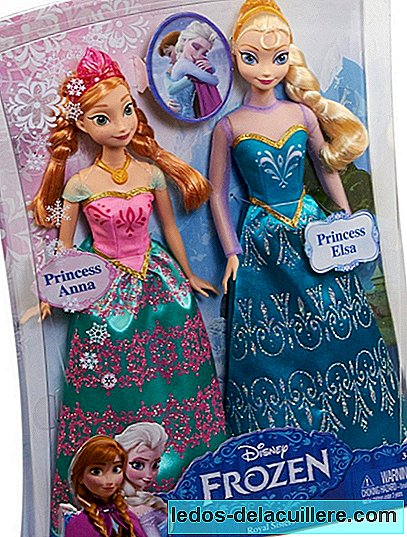
Currently, there are two regulations governing child restraint systems (SRI): the ECE R44 / 04 regulations (in force since 1982) and the ECE R129 or i-Size regulations (in force since 2013).
In the market we will find chairs approved with one or other regulations, although it is expected that in the coming years (there is still no fixed date) the ECE R44 / 04 regulations will disappear and with it their chairs, the ECE R129 or i-Size regulations will remain in force exclusively.
How are both regulations different?
The main differences between the ECE R129 and ECE R44 approval are:
- The new regulations stop classifying chairs by groups (0/0 + / I / II / III) as does the ECE R44 regulations, and passes to Divide the chairs by weight and height intervals.
The manufacturers of children's chairs have taken time to market approved models under the new regulations, but several can already be found.
The ECE R129 regulation takes another step in the use of backwards chairs, approving only those that allow this position until 15 months of age.
The ECE R129 regulation establishes some minimum dimensions for vehicle seats and maximum dimensions for children's chairs. Both the chair and the seat of the vehicle must have a distinctive "i-size". In this way, we can install the chair in any seat of the vehicle approved with said badge.
 Photo Mapfre Foundation
Photo Mapfre Foundation 
The crash tests for chairs with ECE R129 regulations are carried out with dummies that incorporate more advanced injury criteria, in order to improve the safety of the little ones.
The homologated chairs under the i-Size regulation can only be installed with isofix system and not with a seat belt. This measure is intended to avoid confusion when installing the chairs because that would reduce efficiency and safety. Therefore, if your car does not have seats with isofix anchors you will not be able to use these new chairs.
At the moment, and although I can generate some confusion, the two regulations will coexist together for another period of time (It is estimated that in 2021). At the moment, and although a date is established in which manufacturers must cease to homologate their chairs under the R44 regulations, families may continue to purchase SRI with one or another homologation:
"Seats approved according to ECE R44 / 04 may continue to be used without any problem. In practice, the new ECE R129 will be an alternative to ECE R44 / 04, which is still in force. From now on, Each child seat manufacturer may choose to approve their seats in Europe according to one or another technical standard. Later, perhaps in 2018, it is possible that the seats approved according to ECE R44 / 04 will begin to disappear "- it is reported from Mapfre Foundation.
Implementation of ECE R129 or i-size regulations
The most current regulations, the ECE R129 or i-size, are being implemented in several phases, introducing gradual improvements to which the manufacturers of chairs and vehicles are gradually adapting.
- First phase (the only phase of this regulation that is currently in force): It has been in force since 2013 and affects child retention systems (SRI) that range from birth to 105 cm height (what we currently know as groups 0 , 0+ and 1).
All the chairs of these groups approved under this regulation are installed only with Isofix system, with the exception of baby carriers for children up to 15 months (or 13 kg) that can be installed with a safety belt if specified by the manufacturer.

It is expected that after summer, a second stage, which will include modifications that will mainly affect children with a height greater than 100 cm and that we will analyze at another point later.
The third phase of this regulation does not yet have an implementation date. As explained by the Mapfre Foundation, it will include modifications necessary to update the ECE R44 / 04 norm for child seats that do not carry isofix and the ECE R14 and ECE R16 standards (on safety belts and their vehicle anchors) in order to that these non-ISOFIX child seats also meet the new criteria included in the first two phases.
What changes does the second phase of the i-Size regulation hold for us?

The second phase of the ECE R129 or i-size standard includes a series of changes that affects car seats for children above 100 cm high and is expected to take effect this summer.
- On the one hand, the elevators must have backup to ensure the complete restraint of the child in case of an accident and a better guidance of the seat belt. The sale of backless elevators will only be allowed when the child exceeds 125 cm in height.
At the beginning of 2017, the oldest regulations (R44 / 04) already introduced the same changes in this type of chairs and since then all group II lifters (from 15 to 25 kg) with R44 / 04 regulations can now only be used Find with backup.
In any case, it should be clear that, at the moment, there is only talk of "homologation." That is, the regulations exclusively affect manufacturers and the sale of these products from the date citedThe Mapfre Foundation explains that the use of elevators without backrest will not be prohibited until the Traffic Regulation picks it up or as indicated by the regulations of the Ministry of Economy, Industry and Competitiveness.
But from the Foundation it is recommended that children under 125 cm use, preferably, lifts with backrest since it considerably reduces the risk of injury in case of side impacts.
 Photo Mapfre Foundation
Photo Mapfre Foundation Therefore, if you use an unsupported elevator for your child, you can continue using it until the Traffic Regulation prohibits it. But if you plan to buy a booster soon and your little one still does not reach 125 cm, it is better that you anticipate the entry into force of this new homologation and acquire it already with support.
- Another of the next measures to be taken is that chairs manufactured under the i-Size regulations will have to go through new lateral impact tests, to further strengthen the safety of SRIs for children over 100 cm tall.
In addition, you are chairs must be compatible with the side airbags of vehicles, so that in the event of a collision, the child's head can be fired from the chair and caught between the airbag and the door.
A review of the regulations of the DGT
And at this point, it is worth reviewing the regulations of the General Directorate of Traffic regarding car seats for children under 135 cm. This regulation, effective as of October 1, 2015, indicates that SRIs should always be located in the rear seats of the vehicle, except:
In two-seater cars where there are no rear seats
When all rear seats are already occupied by other minors of the same characteristics
When it is not possible to install all child restraint systems in the rear seats
In the event that the child's chair must occupy the front seat, it can only be used if it is approved in weight and size, and if the vehicle has a front airbarg in the event that the chair is facing the ride. If it is a chair in reverse, the airbarg must be deactivated.
IStock photos
Via Maprfre Foundation, General Directorate of Traffic, RACE
In Motorpasion: What are i-size child restraint systems and why do you want to know?
In Babies and More Tips for choosing the older car seat, Back-up chairs: the safest child restraint systems for traveling, Isofix system, use and mounting without errors, Children measuring less than 1.35 always in the back seat,












